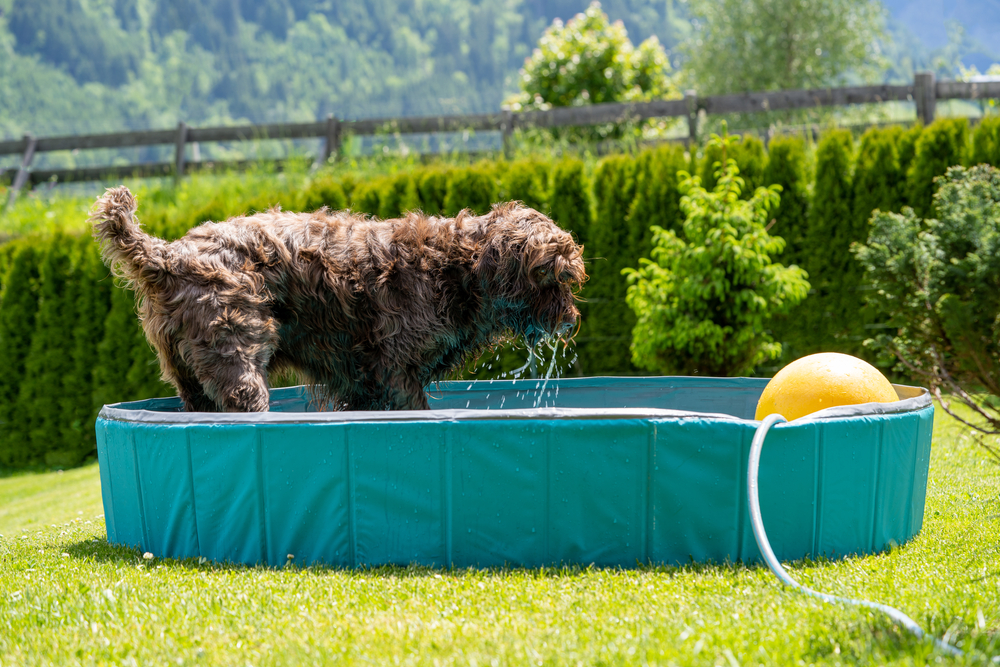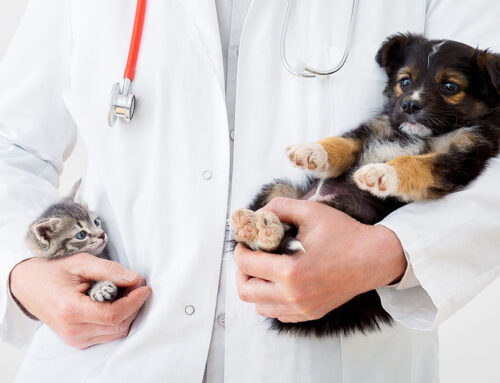Although Florida’s year-round temperatures are higher than most of the country, summer is particularly brutal, as thick humidity and extreme heat can make being outside miserable, and threaten your pet’s health. However, your furry pal must continue to exercise and eliminate, so outdoors you go. To prevent your pet from developing a life-threatening health condition from the high temperature and humidity levels, learn how to keep them safe while outside. Before venturing outdoors with your pet this summer, check out our Veterinary Medical Center of Indian River County team’s heat safety do’s and don’ts.
DO provide your pet with water, shade, and ventilation when outdoors
Your pet’s three summertime outdoor-play necessities include fresh water, shade, and ventilation. However, two of three are not good enough: An unventilated, closed garage is hot and suffocating. To prevent your furry pal’s overheating, always ensure they have access to all three summertime essentials—fresh water, shade, and ventilation.
DON’T exercise or play with your pet during the hottest part of the day
Afternoon is typically the day’s hottest time before the sun sets, and to prevent your pet from overheating, you should plan summertime outdoor exercise and play for the early morning or late evening. In addition, summer outdoor humidity levels vary throughout the day, so monitor these levels, and avoid outdoor summertime fun when humidity levels are at their highest. If your pet is itching to burn energy when temperature or humid levels are unbearably high, stick to indoor activities—training sessions, hide and seek, or fetch in the hallway.
DO keep your pet cool outdoors with water play
If your four-legged friend is begging to play outside, stay cool by adding water to your summertime activities. Take a refreshing dip with your pet in the swimming pool’s shallow end, or put your pet in their safety vest, and take a running leap into the pool’s deep end. No matter the body of water—pool, lake, ocean, or stream—after swimming, thoroughly rinse off your pet’s fur with fresh water to remove chlorine, dirt, and potential pathogens.
You can also allow your pet to romp through the sprinkler or play on a splash pad to stay cool while in the yard. In addition, if your pet is unsure about immersing themself in a swimming pool, they may enjoy playing in a child’s wading pool filled with a few inches’ water, which can be more fun and interactive when you add floating toys or treats.

DON’T take your pet with you to run errands
While your dog may love being your sidekick as you run errands on cool, comfortable days, during the summer, you should leave them home with the A/C cranked. Remember, mild 70-degree days can also be dangerous to your pet if you leave them unattended in a parked vehicle, as temperatures can rise to deadly levels within a short period. In addition, do not leave your pet unattended in a running car, because they can accidentally turn off the air conditioning. The best way to keep your furry pal safe and cool while you run summertime errands is to leave them at home.
DO avoid asphalt and pavement when walking your pet
Walking barefoot across pavement during midsummer can burn your feet as though you walked across a bed of hot coals, and your pet’s paw pads can burn just as easily. Keep in mind that your pet’s feet are extremely sensitive, and a short walk across the blistering summer pavement can scorch your four-legged friend’s paw pads. Stick to shaded areas, dirt, or grass when you and your pet take your daily summer walks.
DON’T ignore your pet’s heatstroke warning signs
When enjoying the summer season outdoors with your pet, monitor them for overheating. To prevent your pet from developing organ damage, begin immediate at-home cooling treatment at heatstroke’s first signs, which may include:
- Heavy panting
- Excessive drooling
- Lethargy
- Weakness
- Disorientation and confusion
- Staggering
- Brick-red gums
- Vomiting
- Diarrhea
- Collapse
- Seizures
If your pet begins to pant more heavily than usual, or seems sluggish and weak, head indoors to begin cooling treatment by placing them in the bathtub, running cool water over them, and directing a fan at their face. To prevent your pet from developing inadvertent hypothermia, stop the cooling treatment once their body temperature lowers to 103 degrees, and bring them to our veterinary medical center for a physical exam.
If you suspect your pet is overheating, immediately begin their cooling treatment at home, and once their temperature lowers to 103 degrees, seek immediate medical treatment. Contact our Veterinary Medical Center of Indian River County team if you suspect your pet has developed heatstroke.







Leave A Comment